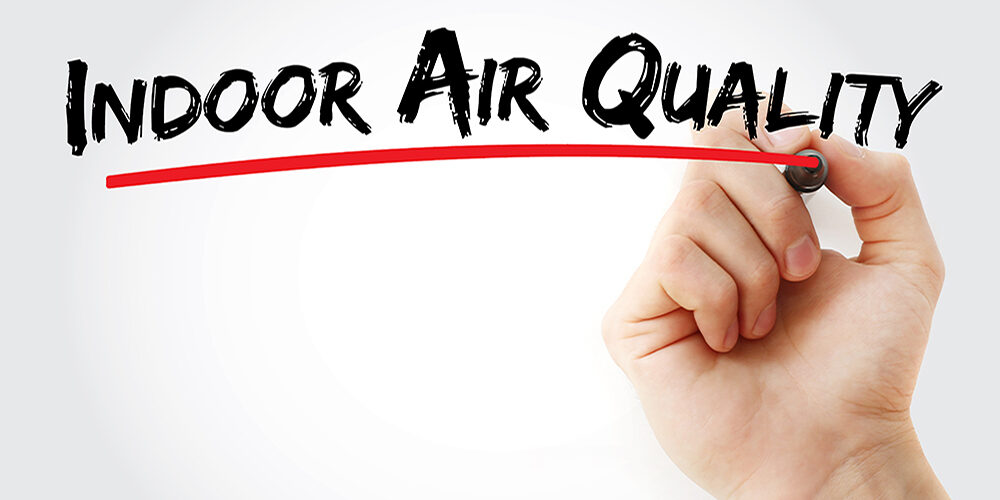One silver lining of the COVID-19 pandemic is the way it raised awareness about the significant impact of indoor air quality (IAQ) on the long-term health and wellness of students, faculty, and staff in our schools, colleges, and universities.
As we enter the fourth school year of the pandemic era, campus facility leaders should make upgrades now to prevent future outbreaks of COVID-19 variants and other viruses, as well as the bacteria, pollution, allergens and volatile organic compounds (VOCs) that all contribute to absenteeism and learning loss.
Too many schools remain inadequately equipped with the right air purification system to combat this problem.
According to a CDC study from earlier this year, fewer than one-third of schools reported using portable HEPA filtration systems in classrooms, lunchrooms and other high-risk areas. About 70% of schools instead reported they plan to use low-cost steps, like moving more activities outdoors and opening windows instead of investing in better ventilation options or air purification.
There’s federal money available to help, but time is running out, especially at the K-12 level.
American Rescue Plan Act (ARPA) funding – ESSER I funding for K-12 schools that expires on Sept. 30, 2022, and HEERF funding for higher education institutions – offer schools the opportunity to invest in their facility’s air quality in the long term, taking a step beyond basic investments like increased sanitation and PPE, to make much-needed facility improvements that can enhance long-term education outcomes. (Editor’s Note: The Sept. 30, 2022 deadline only applies to part of the federal funds that are available. The other deadlines are Sept. 2023 and Sept. 2024, with the largest traunch’s deadline being 2024. For additional information, watch this video.)
Indoor Air Quality is a Crucial Investment
Air quality is an invisible, often-overlooked part of health and wellness, but it’s a critically important aspect to stop the spread of COVID-19 and other viruses. Students, faculty and staff spend most of their week in high-density indoor environments that are especially at risk for spreading viruses. But improved IAQ is more than just a preventative measure against illness. Better IAQ is linked to higher student productivity, improved test scores and lower absenteeism rates, according to the Environmental Protection Agency (EPA).
The first instinct for many facilities decision-makers seeking improved IAQ is to improve HVAC systems. This is one way to address IAQ, but it’s not sufficient alone to adequately clean air. According to the Lancet COVID-19 Commission Report, air purification with HEPA filters is one of the four key components needed for cleaner indoor air and is a crucial part of a layered mitigation approach to improving IAQ.
Air purifiers are a simple but extremely effective way to guard against COVID-19 and other viruses, pollutants, allergens and VOCs. They work alongside your HVAC system to improve air exchange/circulation rates (eACH). Installing an air purification system is relatively fast and doesn’t disrupt building operations in the way installing or upgrading an HVAC system would do, making it a valuable investment for schools as the new school year ramps up and students are back in classrooms and student housing.
Effectively Investing in Air Purification
Using the available ESSER and HEERF funding at their disposal, how do schools invest in air purification in a way that makes a positive long-term impact on the health and wellbeing of students, teachers and staff?
Do your research to find an air purifier that fits your school’s needs and has proven, scientifically-backed claims that meet medical-grade filtration. The best commercial air purifiers include:
- An H13 True HEPA filter that captures 99.95% of airborne contaminants as small as 0.1 microns, including viruses and allergens such as pollen, dust, pet dander and smoke.
- Activated carbon filter that reduces odors and VOCs.
- Automated features that react and adjust to external conditions, including changes in contaminants, room occupancy and noise levels.
- Easy installation and maintenance. Some solutions offer sensor technology and displays that provide real-time status updates and alerts when it’s time to replace the filter.
- Features that optimize performance and save money by working hard during high occupancy times and returning to standby mode when a room is empty.
When making the investment in air purifiers, be sure to also consider the size of room coverage and frequency of air changes that the system promises to ensure it is in line with the size and needs of your facility. After you invest in air purifiers, facility managers should stay on top of filter changes annually for peak performance.
IAQ Benefits Beyond COVID-19
Although the ARPA funding spurred by COVID-19 creates a timely opportunity for schools to make significant investments in IAQ, the benefits of cleaner air extend far beyond the pandemic. Improved air quality reduces airborne chemicals, smoke, allergens and other forms of pollution and is known to lower the risk of stroke, lung cancer, respiratory disease and other health concerns.
These benefits apply to other facilities besides schools as well, and go far beyond physical wellness. Results of research from Harvard and Syracuse Universities showed that employees in a clean air environment performed 61% better on cognitive tasks than employees in standard office conditions – results that suggest improved IAQ has a significant impact on mental cognition and wellness.
IAQ Matters for All Campus Types
IAQ should be a key consideration when investing in facility improvements for high-occupancy buildings including hospitals, senior living communities, hotels, restaurants and other indoor environments seeking to enhance health and safety outcomes while increasing productivity.
The pandemic has taught us that healthy building environments can make all the difference in protecting our health and wellbeing and creating optimal conditions for academic and work success.
By investing in air purification and other IAQ improvements now before ESSER and HEERF funding expires, schools can take a much-needed step toward a sustained healthy learning environment that has a lasting positive impact on their students.
Arti Lyde is Global General Manager — Air Quality Management, for Fellowes Brands, a manufacturer of indoor air purification systems and broad-based business solutions.
The views expressed by guest bloggers and contributors are those of the authors and do not necessarily represent the views of, and should not be attributed to, Campus Safety.













